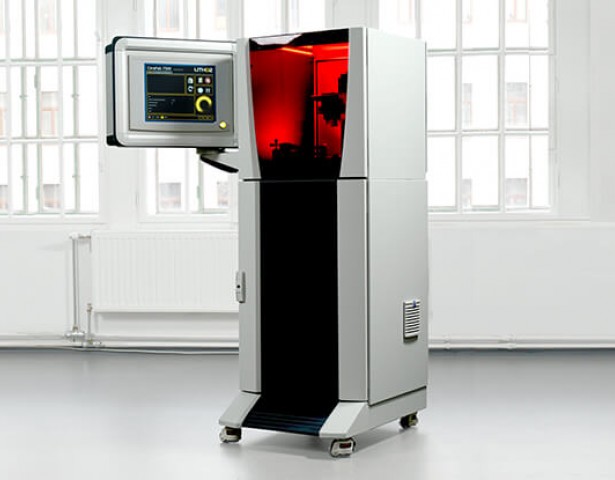ADDITIVE MANUFACTURING SYSTEMS FOR CERAMICS
Lithoz provides industry and research with additive manufacturing systems for the production of high-performance ceramics. The individual system components are perfectly coordinated and guarantee high-quality parts made of high-performance ceramics, directly produced from correlating CAD data. Moreover, Lithoz’ product portfolio includes various ceramic materials and software products optimized for 3D-printing as well as customer-specific solutions for complex challenges.
CERAFAB 7500 & CERAFAB 8500
Lithoz’ CeraFab systems are reliable and user-friendly plug-and-play network printers that perform in stand-alone operation. They facilitate the production of high-performance ceramics with material properties found in conventional manufacturing processes. Through the elimination of tools and a minimal level of material consumption within the production process, it is now finally possible to economically manufacture prototypes and small batches of high-performance ceramic parts.
High-Quality Parts
Parts that have been manufactured using LCM technology exhibit similar or equal material properties to those that have been manufactured using conventional methods. For instance, the manufactured alumina parts have 99.4 % of the theoretical alumina density (>3.96 g/cm3) and a 4-point bending strength of 430 MPa. Zirconia parts have a density of 99.6 % of the theoretical value and a tensile strength of 650 MPa. Moreover, the manufactured parts display excellent surface quality (alumina: Ra~ 0.4 µm, zirconia: Ra~ 0.6 µm) without post-processing.
CeraFab 7500
Bildschirmfoto 2017-01-03 um 13.58.41
Download Folder
OPERATING PRINCIPLE OF THE CERAFAB SYSTEMS
The LCM technology was developed by Lithoz and is based on the principle of photopolymerization. Ceramic powder is homogeneously dispersed in a light-sensitive organic matrix and selectively structured through mask exposure.
The body of the CeraFab system consists of a vat, filled with a photocurable slurry. Through the rotation of the vat, a layer of slurry is applied with a static wiper blade. The vat is transparent so that the slurry can be lit from below. Lithoz uses a specially engineered projection system, whereby the light engine and the custom optical system are perfectly attuned.
LEDs are used for light exposure, due to their long working life, homogeneous light distribution and consistent output. The projected image is generated via a digital mirror device (DMD). The mirror array consists of more than two million mirrors, which are lit by the LEDs, and can be operated individually. Each of these mirrors can be turned on or off separately and simultaneously, which enables dynamic mask exposure. The advantage of this procedure is that the entire surface area is exposed at the same time, making the duration of light exposure independent of the size of the cross section to be exposed.
